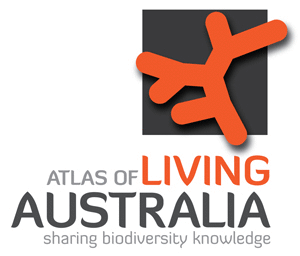Online species maps from environmental DNA
This project is now complete, and you can read the abstract of the final report here.
The Environomics Future Science Platform has teamed with the Atlas of Living Australia to build a new online system to make cutting-edge biological records accessible.

The Atlas of Living Australia (ALA) provides free, online access to information about Australia’s amazing biodiversity
Biological records underpin a vast number of applications in natural resource management including national park design, fisheries management, forestry, biosecurity and more. For several hundred years biological records have been derived from either observations in nature or the collection of specimens. Innovations in the past decade have enabled these records to be made publically available through portals such as the Atlas of Living Australia.
Now a whole new type of biological record is available and made possible by the genomics revolution. Through genomics scientists can now take a bucket of seawater and identify all of the fishes living nearby without seeing them just by reading the DNA sequences floating in the water. These “eDNA” records are valuable because they can be obtained from difficult or dangerous environments. Molecular methods like eDNA are well-suited to analysis by high-throughput robotics and automation so it’s likely that they will contribute an increasing number of biological records in the future.
The collaborative project between the Environomics FSP and the ALA will build the software architecture for this new and growing type of biological record to be accessed alongside conventional records on the Atlas of Living Australia web portal.
Further information and instructions on how to use eDNA data from the Atlas, and how to upload eDNA data to the Atlas can be found here.
Project leader: Michael Hope
Image credit: Reef0653 by Dr. Dwayne Meadows at https://www.flickr.com/photos/noaaphotolib/5014587569/ under a Creative Commons Attribution 2.0. Full terms at https://creativecommons.org/licenses/by/2.0/
